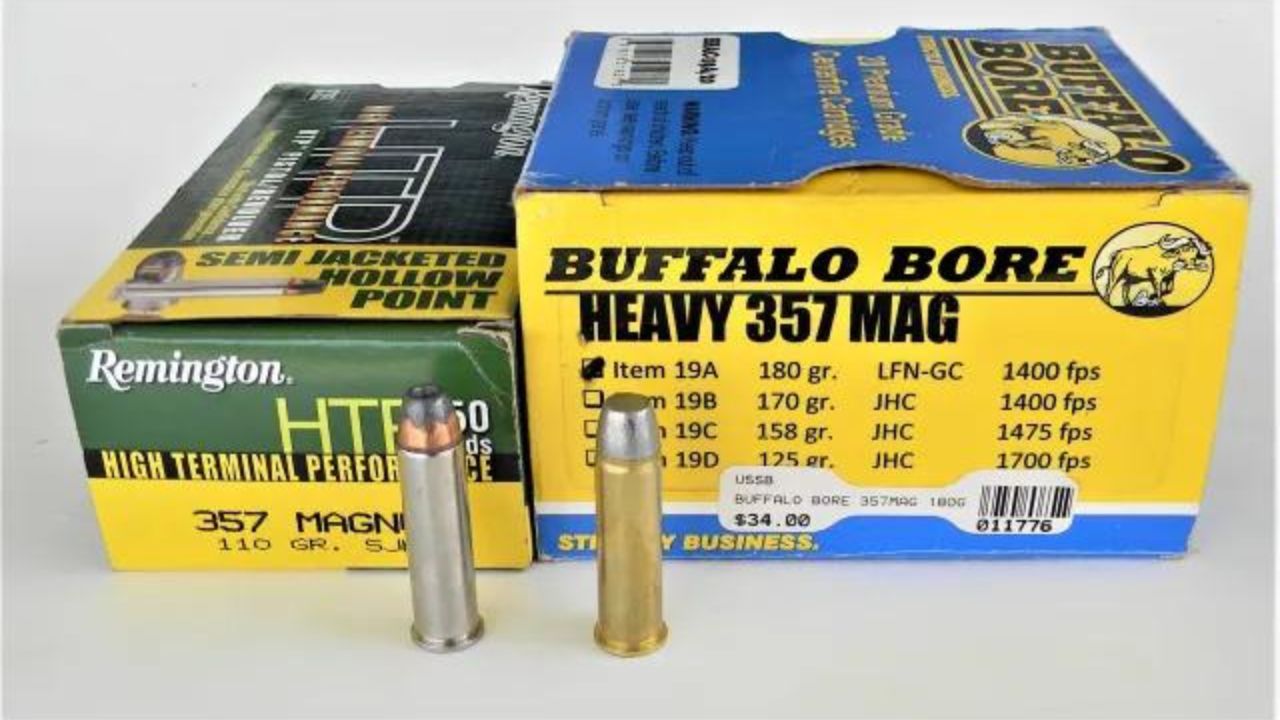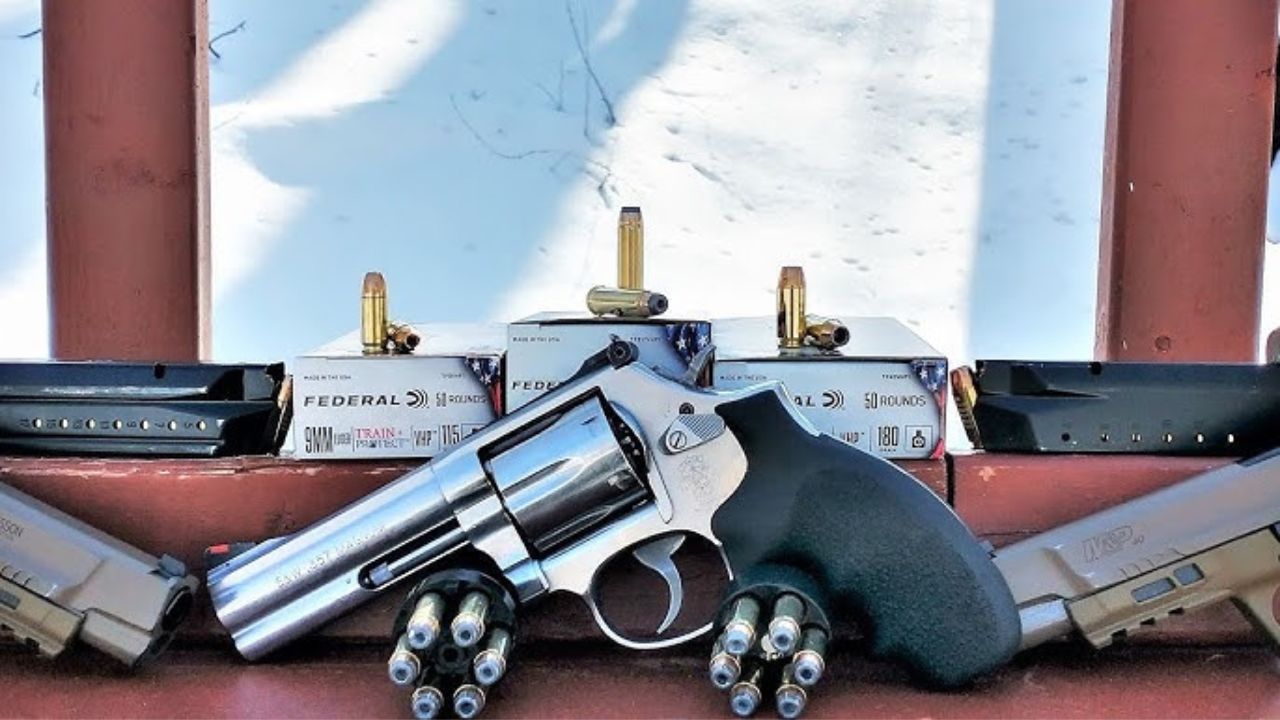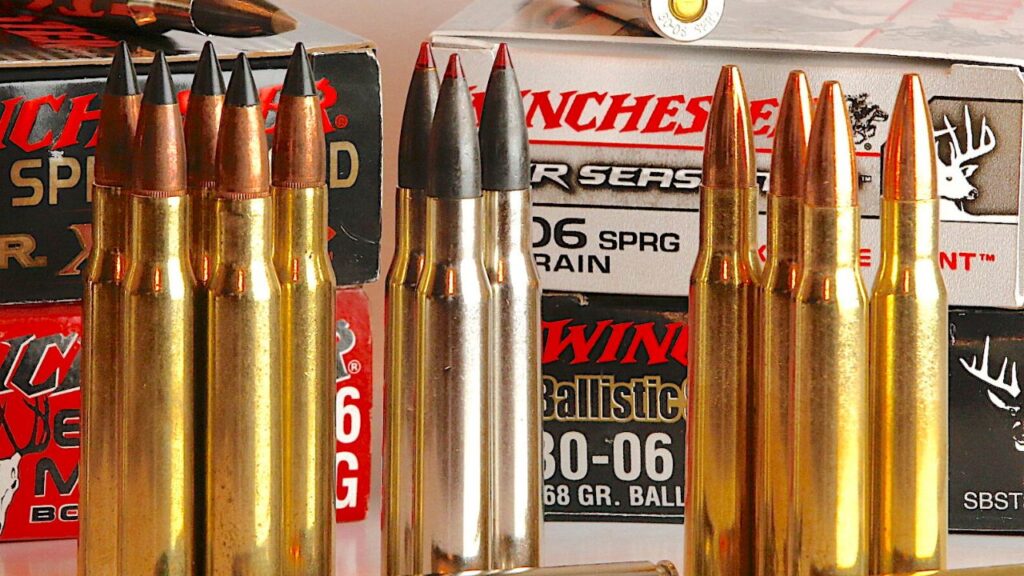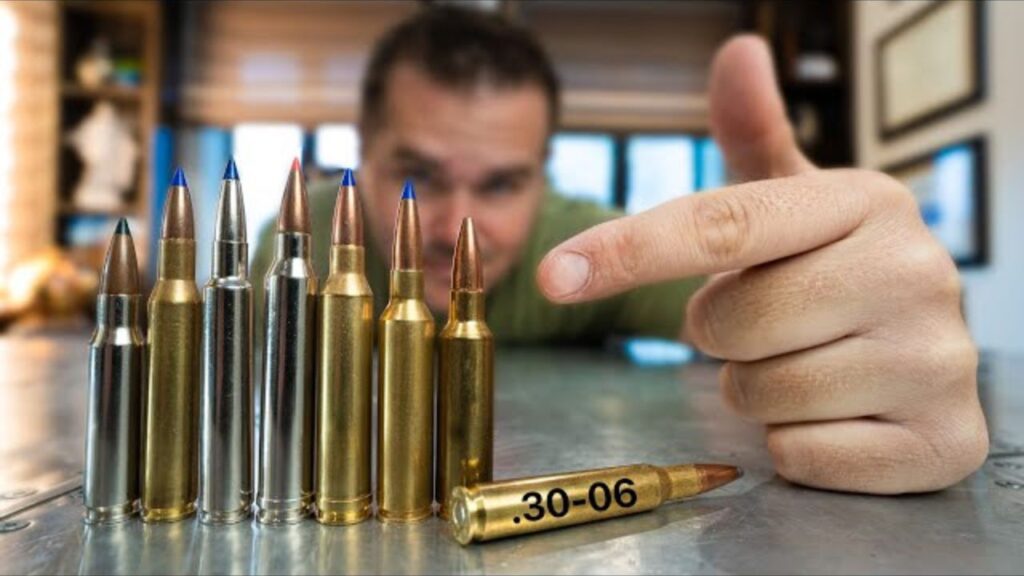In the rugged wilderness where best 357 ammo for bear defense roam freely, being prepared for potential encounters is paramount for outdoor enthusiasts and adventurers alike.
A crucial aspect of preparedness is having the right ammunition on hand to defend yourself against bears. Since ammunition choice can make a significant difference in a life-threatening situation, it is essential to understand the nuances of the various options.
The .357 caliber stands out as a popular choice for bear defense due to its balance of power, maneuverability, and availability.
In this best 357 ammo for bear defense comprehensive guide, we delve into the realm of the best .357 ammunition for bear defense, exploring its features, performance, and real-world effectiveness.
Through a detailed examination of ammunition types, performance metrics, real-life anecdotes, and expert opinions, this guide aims to provide you with the knowledge necessary to make informed decisions when selecting the optimal .357 ammunition for bear encounters.
Understanding Bear Attacks

Bear attacks can occur unexpectedly in the wild, posing significant risks to human safety. Understanding the dynamics of bearish behavior is crucial to mitigating these risks.
Bears may attack by surprise to defend their territory or their cubs or in search of food. best 357 ammo for bear defense for self defense is essential to recognize signs of bear presence, such as fresh tracks or droppings, and remain alert in bear habitat.
Avoid surprising bears by making noise while walking and being aware of your surroundings. In the event of an encounter with a bear, remain calm and avoid sudden movements.
Back away gradually while facing the bear and avoid making direct eye connection, as this Ruger Redhawk Vs Super Redhawk may be perceived as a threat.
In some cases, playing dead may be effective, while in others, defensive actions such as the use of bear spray or firearms may be necessary.
Understanding bear behavior and responding appropriately can help minimize the risk of bear attacks and promote safe interactions in the wild.
Characteristics of Effective Ammunition to Defend Against Bears
When selecting ammunition for bear defense, several key characteristics contribute to its effectiveness in neutralizing potential threats posed by bears.
Understanding these characteristics can help people make informed decisions and choose the most appropriate ammunition for their specific needs and circumstances.
Penetration power:
An effective ammunition for bear defense must possess enough penetrating power to penetrate the thick hide, muscle tissue and bones of bears.
Deep penetration ensures that the bullet reaches vital organs and effectively hinders the bear, stopping its aggressive behavior.
Munitions with deep penetration capabilities can deliver consistent and reliable performance in various encounter scenarios.
Braking power:
Stopping power refers to the ammunition’s ability to quickly hinder or stop a bear’s aggressive advance.
Ammunition with high stopping power provides significant kinetic energy upon impact, causing rapid tissue damage and disrupting the bear’s central nervous system.
The 6.5 creedmoor vs 7mm rem mag effectiveness of stopping power is influenced by factors such as bullet weight, velocity, and terminal ballistics.
Reliability:
Reliability is a critical aspect of bear defense ammunition, ensuring consistent performance under various environmental conditions and in high-stress situations.
Reliable ammunition functions perfectly in firearms, minimizing the risk of malfunctions or misfires at critical moments.
Ammunition with a proven track record of reliability and consistency is preferred for bear defense applications.
Projectile weight and design:
Projectile weight and design significantly affect terminal performance and penetration capabilities.
Heavy bullets, typically weighing 180 grains or more, are preferred for bear defense due to their greater penetration and kinetic energy transfer.
Bullets with controlled expansion characteristics, such as bonded core or solid copper designs, retain their mass and penetrate deeply without sacrificing terminal performance.
By prioritizing features such as penetrating power, stopping power, reliability, and projectile design, individuals can select ammunition that delivers optimal performance and effectiveness in bear defense scenarios.
Best 300 win mag vs 308 for self-defense is crucial to complete comprehensive research, consult with experts, and participate in appropriate training to ensure competency and preparedness in bear country.
Available .357 Ammunition Types

When considering bear defense ammunition in the .357 caliber, people have several options to choose from, each with their unique characteristics and intended applications.
Understanding the different types of .357 ammunition available can help people make educated decisions based on their specific needs and preferences.
Jacketed Hollow Points (JHP):
Jacketed hollow point bullets feature a hollow cavity in the tip, created to expand upon impact and create a larger wound channel.
JHP ammunition is commonly used for self-defense and offers reliable expansion and stopping power against soft targets.
While JHP bullets can provide effective terminal performance against humans, their performance against large, thick-skinned animals such as bears may vary.
Full Metal Jacket (FMJ):
Metal jacketed bullets are coated with a copper or brass jacket, which provides greater penetration and reduces lead contamination in firearms.
FMJ ammunition is known for its dependability and even skit, making it a popular choice for target shooting and training purposes.
However, FMJ bullets may need more expansion and stopping power for effective bear defense, particularly for large, aggressive bears.
Hard cast lead bullets:
Hard-cast lead bullets are solid projectiles made from lead alloyed with other metals for added hardness and durability.
These 357 ammo for grizzly bullets feature a flat or round nose design and are capable of penetrating deeply through tough barriers, including bone and muscle tissue.
Hard lead bullets are preferred for their ability to penetrate deeply and offer decisive stopping power, making them suitable for bear defense applications.
Special Bear Defense Charges:
Some manufacturers offer special bear defense loads designed specifically for use against large, dangerous game animals, including bears.
These loads typically include heavy, hard bullets with flat or wide meplat designs optimized for maximum penetration and tissue disruption.
Specialty bear defense loads often incorporate advanced bullet technologies and premium components to ensure reliable performance in high-stress situations.
By exploring the different types of .357 ammunition available, individuals can evaluate their performance characteristics and suitability for bear defense applications.
Selecting ammunition that strikes a balance between penetration, stopping power, and reliability is essential to effectively neutralizing the threats posed by bears in the wild.
Performance Comparison:
Evaluating the performance of .357 ammunition is critical to effective bear defense. Ballistic gel tests reveal the penetration depth and performance of the terminal, which is vital to neutralizing threats.
Recoil and controllability determine shooter comfort and follow-up shot accuracy in high-stress encounters. Accuracy at various distances ensures precise shot placement, which is crucial to mitigating bear threats.
By analyzing these factors, individuals can select ammunition that offers an optimal balance of penetration, stopping power, and reliability.
A comprehensive comparison helps make informed decisions and p226 mk25 improves preparedness in bear country.
Real World Case Studies
Examining real-world experiences and case studies related to the use of .357 ammunition in bear encounters provides valuable information regarding its effectiveness and performance in real wildlife conditions.
By analyzing these anecdotes and narratives, people can gain practical knowledge and learn valuable lessons about bear defense strategies and ammunition selection.
Bear Encounters Personal Accounts:
People who have encountered bears in the wild often share their experiences and knowledge about the effectiveness of .357 ammunition.
Personal accounts offer firsthand perspectives on the challenges and dynamics of bear encounters, including the decision-making process and outcomes of using firearms for defense.
The anecdotes highlight the importance of preparation, situational awareness and proper firearms handling techniques to mitigate bear-related risks.
Lessons learned from bear encounters:
Analyzing the circumstances and outcomes of past bear encounters provides valuable lessons and best practices for future wilderness excursions.
People share ideas about effective bear deterrents, defensive strategies, and the role of .357 ammunition in mitigating bear threats.
The case studies illustrate the importance of remaining calm, assessing the situation, and employing appropriate response measures when encountering bears.
Considerations for ammunition selection:
Real-world case studies shed light on the performance and effectiveness of different types of .357 ammunition in bear defense scenarios.
Individuals share observations on the penetration depth, stopping power, and terminal ballistics of various ammunition options in actual bear encounters.
Knowledge from real-world experiences informs ammunition selection criteria and helps people make informed conclusions based on empirical evidence and practical considerations.
By studying real-world case studies and narratives of bear encounters involving .357 ammunition, individuals can gain valuable information on effective bear defense strategies and ammunition selection criteria.
Learning from the experiences of others improves preparedness, fosters situational awareness, and contributes to safer outdoor experiences in bear country.
Expert Recommendations
When considering .357 ammunition for bear defense, experts advise prioritizing reliability, penetrating power, and stopping power.
Wildlife professionals emphasize the importance of non-lethal deterrents and responsible use of firearms in bear encounters.
Firearms instructors emphasize proficiency and recommend regular training and familiarization with your chosen firearms.
Experienced outdoorsmen emphasize the importance of understanding bear behavior and selecting appropriate ammunition based on real-world effectiveness.
They suggest opting for heavy, hard bullets with controlled expansion for maximum tissue penetration and disruption.
In general, experts advocate a holistic approach to preparing for bear encounters, including education, situational awareness, and compliance with legal regulations.
By combining knowledge, skills, and respect for wildlife, people can navigate the country safely and responsibly. Expert recommendations underscore the need for proactive measures, such as carrying bear repellent and avoiding confrontational situations.
Ultimately, preparation and informed decision-making are key to promoting a harmonious coexistence with bears and fostering a deeper appreciation of the natural world.
Legal considerations:
Navigating the legal landscape surrounding bear defense firearms and ammunition requires careful attention to federal, state, and local regulations governing their possession, use, and transportation.
Understanding the legal considerations associated with .357 ammunition in bear country is essential to ensure compliance with applicable laws and regulations while prioritizing personal safety and responsible firearms ownership.
Laws and regulations:
Federal, state, and local laws regulate the custody, purchase, and use of firearms and ammunition, including those intended for bear defense.
Individuals should familiarize themselves with the relevant statutes, regulations and ordinances governing the possession and use of firearms and ammunition in wilderness areas and bear habitats.
Laws can vary by jurisdiction and may include restrictions on firearm caliber, ammunition type, magazine capacity, and permitted uses in national parks or designated wildlife refuges.
Firearms License and Registration:
Some jurisdictions require people to obtain licenses or permits to possess firearms and ammunition for self-defense purposes, including bear encounters.
Firearms may be subject to registration requirements, background checks, and waiting periods before acquisition or transfer.
Compliance with firearms registration and licensing requirements is essential for the legal possession and use of firearms and ammunition in bear country.
Use of force laws:
Use-of-force laws govern the circumstances under which people can legally employ firearms or other defensive measures to protect themselves against imminent threats, including bear attacks.
People should understand the legal standards for justifiable use of force, including self-defense, defense of others, and defense of property, as they apply to bear encounters.
Use-of-force laws may impose obligations to retreat, seek alternative means of evasion, or employ non-lethal deterrents before resorting to deadly force in bear-defense situations.
Information requirements:
Persons involved in bear encounters that result in the discharge of firearms or the use of deadly force may be subject to reporting requirements under applicable laws and regulations.
Reporting obligations may include notifying law enforcement authorities, wildlife agencies, or conservation officials of the incident, including details of the encounter, the discharge of the firearm, and any resulting injury or death.
Compliance with reporting requirements facilitates transparency, accountability, Hodgdon H4198 and effective response to bear-related incidents within the community.
By understanding the legal considerations associated with .357 ammunition for bear defense, individuals can navigate legal complexities, mitigate legal risks, and promote responsible firearms ownership practices in bear country.
Seeking legal guidance, staying informed about relevant laws and regulations, and adhering to ethical principles of firearms use contribute to safe and legal contact with bears in wild environments.
Tips for preparing for a bear encounter:
Meeting a bear in the wild can be an exciting but potentially dangerous experience. Being prepared and learning how to respond appropriately can help mitigate risks and promote safety for both humans and bears.
Here are some essential tips to 357 for bear defense:
Learn about bear behavior:
- Learn about the behavior, habitats, and feeding patterns of bears native to the areas you plan to visit.
- Understand the differences between black bears and grizzly bears, including their behaviors and preferred habitats.
Make noise while walking:
Bears can be scared if you encounter them unexpectedly. Make noise as you walk by talking, singing, or clapping your hands to alert bears to your presence and avoid surprising them.
Bring bear deterrents:
- Consider having bear deterrents, such as bear spray, which can effectively deter an aggressive bear when used correctly.
- Keep bear spray on hand and familiarize yourself with its proper use before venturing into bear territory.
Store food and garbage properly
- Keep food, cooking utensils, and scented items safely stored in bear-resistant containers or hanging from a tree branch away from your campsite.
- Dispose of trash properly in bear-proof containers or pack it with you to minimize attracting bears to your campsite.
Stay calm and assess the situation:
- If you meet a bear, stay quiet and avoid sudden moves or loud noises that could scare or provoke the bear.
- Evaluate the bear’s behavior to determine whether it is defensive, curious, or aggressive. If the bear is unaware of your presence, walk away slowly.
Dont run:
Running can trigger a chase response in bears, especially if they perceive you as prey. Avoid running and keep a steady pace as you move away from the bear.
Use firearms as a last resort:
- If a bear charges or displays aggressive behavior, use firearms as a last resort in self-defense.
- Make sure you have mastered your firearm and are familiar with its operation before relying on it in a bear encounter.
Respect bear habitat and territory:
- Please be respectful of the bears’ habitat and avoid disturbing or approaching them in their natural environment.
- Provide bears with enough space to forage, travel, and engage in natural behaviors without feeling threatened or harassed.
Travel in Groups:
- Traveling in groups can increase safety by making noise and appearing larger to bears.
- Stay together and be aware of each other’s whereabouts while hiking or camping in bear country.
Stay informed and seek guidance:
- Stay informed about bear activity and recent encounters in the areas you plan to visit.
- Seek advice on bear safety practices and precautions from park rangers, wildlife officials, or experienced guides.
By following these tips to prepare for encounters with bears, people can minimize the likelihood of negative encounters and promote a harmonious coexistence with bears in their natural habitats. Preparation, awareness, and respect for wildlife are essential components of responsible outdoor recreation in bear country.
Conclusion:
Navigating a bear country requires a combination of preparation, awareness, and respect for nature and its inhabitants.
As outdoor enthusiasts, hikers, campers and adventurers venture into the vast expanses of the wilderness, understanding the dynamics of bear encounters and taking proactive measures to defend them is critical to ensuring safety and minimizing risks. Risks.
By prioritizing factors such as penetrating power, stopping power, and reliability, individuals can select ammunition that offers optimal performance and effectiveness in neutralizing potential bear threats.
Real-world case studies and expert recommendations have provided valuable information on effective bear defense strategies, ammunition selection criteria, and legal considerations for dealing with bear encounters responsibly.
Additionally, advice for preparing for bear encounters has emphasized the importance of education, awareness, and proactive measures to underestimate the likelihood of negative encounters and promote coexistence with bears in their natural habitats.
Through proper food storage, bear deterrents, and respectful behavior, people can mitigate risks and encourage safe interactions with bears while enjoying the wonders of nature.
FAQ
Is a 357 Magnum good for defending against bears?
It has a maximum power charge of 357 mag. It will kill a bear more reliably, but it still doesn’t have enough power to provide a wide enough margin of error to be considered adequate in most circumstances.
What is the most powerful 357 Magnum ammunition?
The most powerful. The 357 round is the 180-grain FN. Three hundred fifty-seven were chambered for use in Marlin and Winchester rifles. 357.



